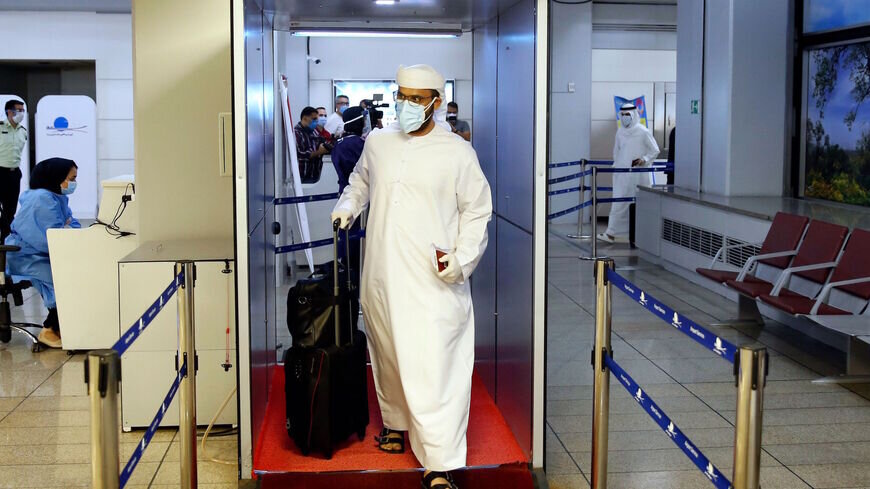Iran sets new rules for inbound tourists from neighboring countries

TEHRAN – Iranian officials have announced new travel regulations for foreign tourists coming from neighboring countries.
The travel restrictions resulting from the coronavirus outbreak have been lifted for travelers from neighboring countries, the deputy tourism minister has announced.
However, it is only possible to cross land borders with a negative coronavirus PCR test and documentation of vaccination, CHTN quoted Ali-Asghar Shalbafian as saying on Tuesday.
The ban on direct and indirect travel by passengers from eight African and two European ones, which was announced earlier due to the outbreak of Omicron COVID-19, will remain in effect until further notice, the official added.
To control and slow down the spread of the new variant of the coronavirus, tourists from Botswana, Swatini, South Africa, Zimbabwe, Malawi, Mozambique, Lesotho, and Namibia as well as England and France are banned from entering the country, he noted.
Back in December, the official announced that air passengers are allowed to enter Iran except those whose departure would be from the mentioned African and European countries.
The official said that land and sea borders will be closed to all travelers excluding those who have specific visas for medical tourism, trade, business investment, and education.
Over the past month, several travel insiders have lamented that pauses for arrivals had caused many problems for the ones who had pre-arranged to visit the Islamic Republic.
Late December, Hormatollah Rafiei who presides over the Association of Air Transport and Tourist Agencies of Iran said some foreign travelers stayed outside Iran’s borders and failed to enter the country as the result of the ban. “None of the tourist-friendly countries have implemented such restrictions and bans,” he said, calling the new regulations and instructions ‘unprofessional’ and ‘wrong’.
“While we support the ban on the entry of citizens of the few African countries that were sources of the new variant of the coronavirus, we object to the suspension of tourist visas for all foreign nationals.” The decision is wrong and will cause damage to the country once again as well as create distrust towards Iran on the global tourism market, he lamented.
Some believe that preventing the spread of new variants of the virus and maintaining public health is preferable to the benefits of tourism.
The new regulations and restrictions on travel to Iran have been put into place just a few months after the visas were issued for foreign visitors after almost 19 months of suspension.
Back in November, Iranian officials announced that in addition to providing proof of vaccination or a negative PCR, inbound passengers must have coronavirus insurance, which differs from the routine insurance coverage purchased by all tourists before the coronavirus era.
Iranian Tour Operators Director Ebrahim Pourfaraj said in November that the restoration of tourism flow to the country is very important for Iranian tour operators and travel insiders. “At the moment, we are not thinking about revenues, but we are looking for the beginning of the tourist flow to the country and renew our links [with international fellows],” Pourfaraj said.
His comments came after months of steep recession triggered by massive coronavirus restrictions which led many travel insiders, hoteliers, and tour operators towards bankruptcy, unemployment, debts, and the prospects of not being competitive on the international level.
As mentioned by Pourfaraj, Iran has made its best to maintain contact with global tourism markets and companies that worked with Iran in the past, especially since virtual communication and meetings have thrived.
“Following the resumption of the tourist visa, visitors from Russia and France have traveled to Iran and we are currently expecting a smaller number of tourists in Iran due to the current situation in the world,” he explained.
In November 2020, the World Tourism Organization announced that international tourist arrivals to Iran plunged 72% during the first eight months of 2020 when compared to 2019, highlighting the severe impact of COVID-19 as the main factor.
The pandemic has taken a huge toll on Iran’s civil aviation sector. For instance, airlines reportedly lost hundreds of millions of dollars because of flight cancellations during the busy New Year travel season last March.
Some experts say Iran has the potential to experience a tourism boom after coronavirus is contained, believing its impact would be temporary and short-lived for a country that ranked the third fastest-growing tourism destination in 2019.
Iran is potentially a booming destination for travelers seeking cultural attractions, breathtaking sceneries, and numerous UNESCO-registered sites. Under the 2025 Tourism Vision Plan, Iran aims to increase the number of tourist arrivals from 4.8 million in 2014 to 20 million in 2025.
ABU/
Leave a Comment